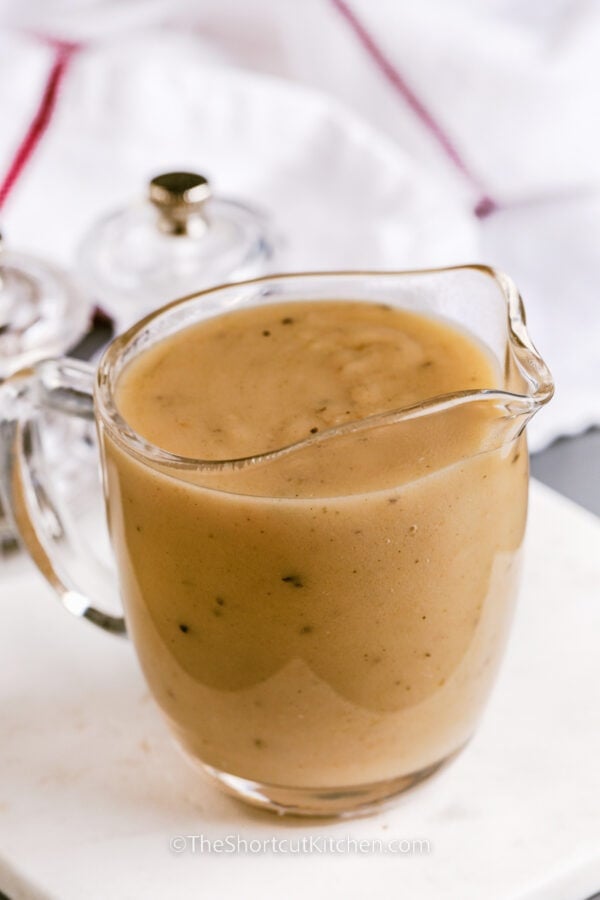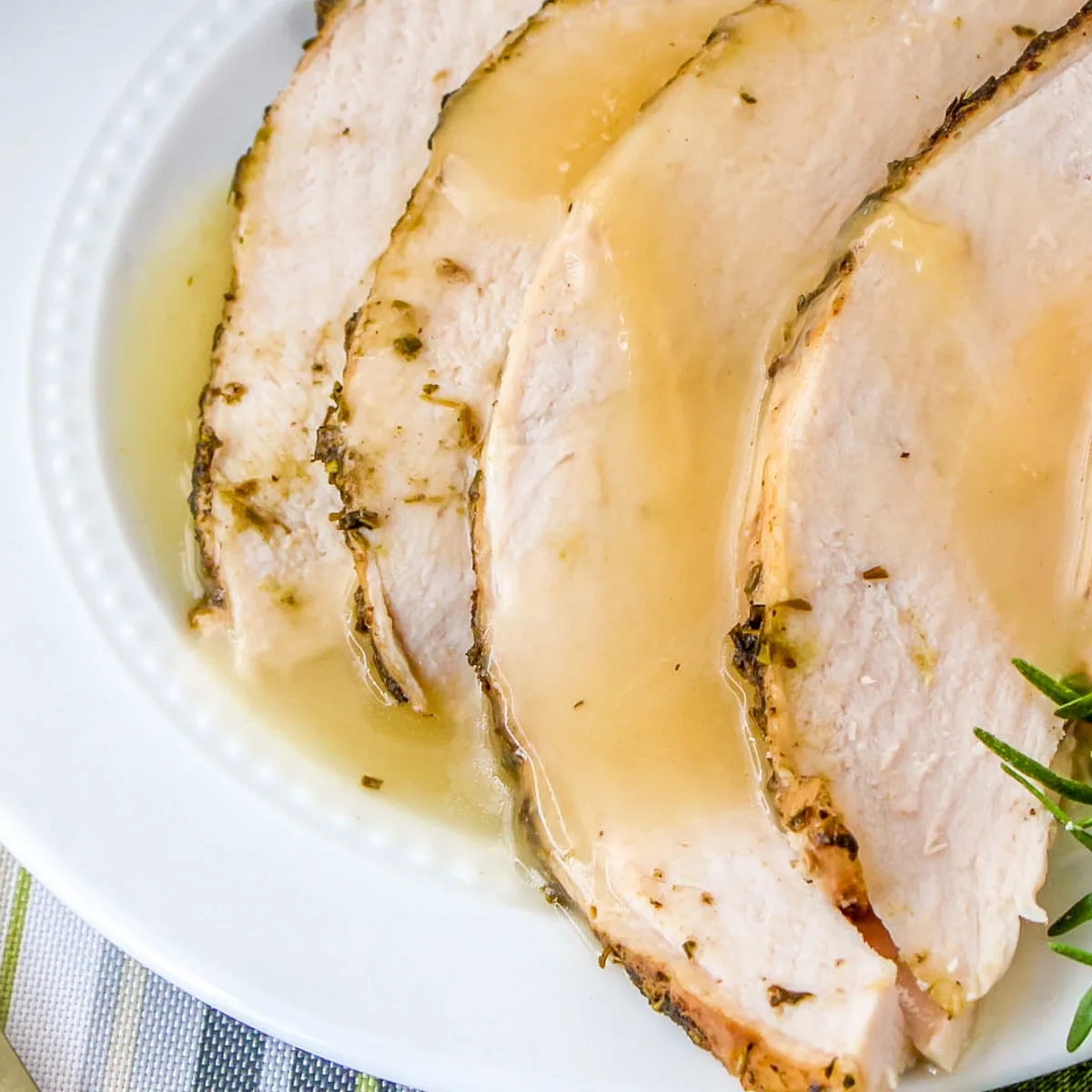
Culinary Techniques For The Perfect Turkey Gravy
Make-Ahead Roux
Making a roux ahead of time is a good way to save time and effort when you’re making gravy.
To make a roux, simply whisk together equal elements flour and butter in a saucepan over medium warmth.

Cook the roux, stirring constantly, till it reaches the specified color. The colour of the roux will decide the flavour of the gravy.
A mild roux will produce a light-colored gravy, whereas a darkish roux will produce a dark-colored gravy.
Once the roux has reached the specified shade, remove it from the warmth and let it cool completely.
The roux can then be stored in an hermetic container within the fridge for up to 2 weeks.
When you’re able to make gravy, simply whisk the roux into the hot liquid until it’s easy and thickened.
You can then add some other desired components, similar to herbs, spices, or vegetables.
Make-Ahead Roux
To make a roux forward of time, whisk collectively equal parts by weight of all-purpose flour and unsalted butter in a small saucepan. Cook over medium warmth, stirring continuously, until the roux reaches the desired color (see below). Transfer the roux to an hermetic container and let cool fully. The roux could be stored within the fridge for up to 2 weeks or in the freezer for as much as 2 months.
Storage
Once the gravy has been made, it could be stored within the refrigerator for as a lot as three days or within the freezer for up to 2 months. To reheat the gravy, thaw it in a single day in the fridge or microwave it on low energy till warmed via.
Reheating
To reheat the gravy, place it in a saucepan over medium heat and produce it to a simmer. Stir continuously until the gravy is warmed via. If the gravy is too thick, add slightly bit of water or broth to thin it out. If the gravy is merely too thin, add somewhat bit of cornstarch or flour to thicken it.
Drippings and Broth
Drippings: The flavorful juices that accumulate in the roasting pan throughout cooking. Collect these juices by spooning them out from the pan.
Broth: A flavorful liquid made by simmering bones, greens, and herbs in water. Use turkey or rooster broth for turkey gravy.
Deglazing the pan: Cooking the remaining bits within the roasting pan with a liquid (such as broth or wine) to dissolve and scrape up any flavorful residue.
Drippings and Broth:
Drippings are the flavorful juices and browned bits that accumulate on the bottom of the roasting pan, whereas broth is the liquid base for sauces and soups. Adding stock to gravy offers additional flavor and depth. Here’s the method to utilize these elements:
1. Drippings:
– Collect the drippings from the roasting pan after the turkey is removed and permit them to cool barely.
– Skim off any excess fat. The fat may be reserved for different culinary makes use of.
2. Broth:
– Prepare a flavorful broth utilizing turkey bones, vegetables, and herbs.
– Strain the broth to remove any solids.
3. Adding Stock and Drippings to Gravy:
– Start with a small amount of drippings and whisk in gradually to keep away from lumps.
– For a richer flavor, add stock to thin out the drippings and create a extra flavorful gravy.
– Taste and modify the seasoning as wanted, including extra stock or seasonings to desired consistency and flavor.
Drippings are the flavorful juices that accumulate in the roasting pan during the cooking process. They are a byproduct of the natural juices released by the turkey because it roasts, in addition to the fat that melts from the skin and fat cap.
Broth is a flavorful liquid made by simmering meat, poultry, fish, or greens in water. It is a versatile ingredient that can be used in soups, stews, sauces, and gravies.
Both drippings and broth are important components of a flavorful turkey gravy. Drippings provide the wealthy, meaty flavor, while broth provides depth and complexity. By combining the 2, you can create a gravy that’s both scrumptious and satisfying.
To make one of the best use of drippings and broth, it may be very important follow a few simple steps:
- Do not pour off the drippings before roasting the turkey. The drippings will assist to maintain the turkey moist and flavorful during the cooking process.
- After the turkey is roasted, remove it from the pan and let it rest on a wire rack. This will permit the drippings to settle to the bottom of the pan.
- Pour the drippings right into a saucepan and skim off any extra fats. You can even pressure the drippings by way of a fine-mesh sieve to take away any solids.
- Add the broth to the saucepan and produce to a simmer. Cook for 5-10 minutes, or till the gravy has thickened to the desired consistency.
You also can add different elements to your gravy to reinforce its flavor, corresponding to herbs, spices, wine, or cream. Experiment with totally different mixtures until you find a taste that you simply love.
Turkey gravy is a versatile ingredient that can be used in a big selection of dishes. It is a scrumptious topping for roasted turkey, mashed potatoes, stuffing, and different Thanksgiving favorites.
Thickening the Gravy
Thickening the Gravy – Whisking in roux
Making a roux is a basic culinary approach used to thicken sauces, soups, and gravies. It entails cooking equal components fats and flour together to create a smooth paste.
To thicken turkey gravy with a roux:
- In a small saucepan, melt an equal quantity of butter and all-purpose flour over medium warmth.
- Whisk constantly till the mixture turns a light-weight golden brown, about 2-3 minutes.
- Gradually whisk within the turkey gravy till it reaches your desired consistency.
- Simmer for 5-10 minutes to take away the uncooked flour taste and allow the flavors to mix.
Tips:
- For a thicker gravy, use extra roux.
- For a lighter gravy, use less roux.
- Don’t overcook the roux, as it’ll turn into bitter.
- Whisk the roux into the gravy steadily to avoid lumps.
As the star of the Thanksgiving desk, turkey gravy demands the utmost care and a focus to element. One crucial facet of attaining the proper gravy lies in thickening it to the desired consistency.
Among the assorted thickening agents out there, the slurry method reigns supreme for its versatility, ease of use, and skill to ship a smooth, lump-free gravy.
A slurry is a mixture of equal elements cold liquid and cornstarch. When whisked collectively, it forms a paste-like substance that serves as the thickening agent.
To thicken your turkey gravy with a slurry, comply with these simple steps:
1. In a small bowl, whisk together equal components chilly water and cornstarch.
2. Gradually whisk the slurry into the simmering gravy, stirring continuously.
3. Bring the gravy again to a simmer and cook dinner, stirring often, till it reaches the desired thickness.
4. If the gravy turns into too thick, simply whisk in further cold liquid as needed.
The great factor about utilizing a slurry lies in its gradual thickening effect. This permits you to control the consistency with precision, guaranteeing that your gravy seems perfectly easy and flavorful.
Seasoning and Finishing
– Seasoning normally refers to adding taste to meals during cooking, while ending refers to adding taste just earlier than serving.
– Salt is a mineral that enhances the natural flavors of food.
– Pepper is a spice that adds a pointy, piquant flavor to meals.
Seasoning and Finishing
When making turkey gravy, you will want to season it properly. This may be carried out with quite so much of herbs and spices, corresponding to thyme, sage, rosemary, black pepper, and allspice. You can even add a bit of garlic powder or onion powder for further flavor.
Once the gravy has been seasoned, it is important to end it off with a bit of butter or cream. This will help to make the gravy easy and creamy. You can also add a splash of white wine or brandy for a bit of additional flavor.
Herbs and Spices
The following are a number of the most typical herbs and spices used to season turkey gravy:
- Thyme: Thyme is a basic herb that provides a heat, earthy taste to gravy for turkey without dripping.
- Sage: Sage is one other popular herb that provides a barely peppery taste to gravy.
- Rosemary: Rosemary is a aromatic herb that adds a woodsy flavor to gravy.
- Black pepper: Black pepper is a flexible spice that adds a bit of heat to gravy.
- Allspice: Allspice is a heat, sweet spice that adds a bit of complexity to gravy.
- Garlic powder: Garlic powder is a handy approach to add a bit of garlic flavor to gravy.
- Onion powder: Onion powder is a convenient way to add a bit of onion taste to gravy.
Seasoning and finishing are the final steps in making ready turkey gravy, and they’re important for creating a flavorful and balanced dish.
Seasoning
Taste your gravy and add salt and pepper to taste. You also can add different spices, such as thyme, sage, or rosemary, to boost the flavour. Be careful to not overseason, as you’ll find a way to at all times add extra seasoning later nevertheless it’s difficult to remove it.
Finishing
Once the gravy is seasoned to your liking, you’ll be able to end it by adding a knob of butter or a splash of cream. This will assist to thicken the gravy and give it a richer taste.

Straining
If you need your gravy to be clean and lump-free, you possibly can pressure it via a fine-mesh sieve. This will remove any bits of meat or greens which will have gotten into the gravy.
